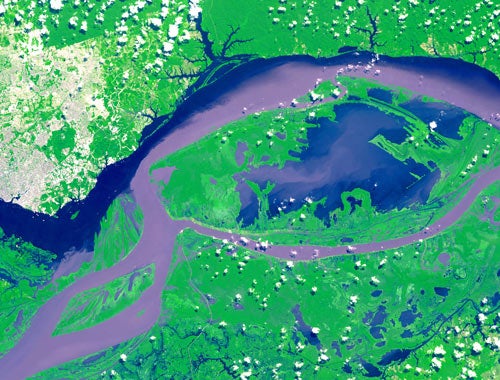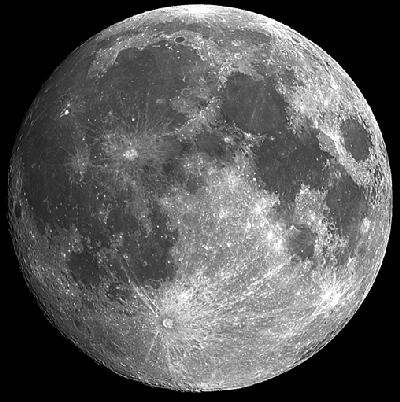Postcards from Venus
Venus Express, the European Space Agency’s (ESA) new mission, is the first spacecraft launched in 15 years dedicated to studying Earth’s nearest planetary neighbor. (The U.S. Magellan spacecraft, launched in 1989, burned up in the planet’s atmosphere October 1994). To celebrate, ESA and the non-profit Planetary Society invite you to enter the Venus Express Art Contest.
The contest is open to anyone. Entrants must submit a postcard-size (4″ by 6″ or 10 centimeters by 15cm) illustration of Venus’ hostile surface as seen from above. The artwork must show Venus itself, not the Venus Express spacecraft. Contest rules allow only one entry per person, and group entries are prohibited. The illustration can be created in any two-dimensional medium, including computer-generated art. Entries may be submitted by mail or online, but they must be received by January 13, 2006, 11:59 P.M. Pacific Standard Time. Click here for complete rules and instructions on how to enter.
The grand prize winner will receive a trip to the European Space Operations Centre in Darmstadt, Germany, during Venus Express’ April 2006 arrival at Venus. — Francis Reddy
Bags packed for a long trip
The science payload for NASA’s New Horizons probe is ready for flight. After a nearly 10-year journey, the mission will be the first to visit Pluto and its moon, Charon.
The spacecraft’s instruments will examine the planet and moon’s atmospheres, compositions, and temperatures. The payload includes three optical instruments, two plasma instruments, a dust sensor, and radio science receiver. An efficient system, collectively, it only takes 28 watts to operate these instruments.
“The New Horizons payload is a remarkably compact, but powerful suite of instruments that will revolutionize our knowledge of Pluto, its large moon, Charon, and bodies farther out in the Kuiper Belt,” says Alan Stern, New Horizons principal investigator. “Hold on to your hats — this payload is going to provide a ringside seat as New Horizons explores the deep outer solar system.”
The probe’s launch is scheduled for January 11, 2006, from Kennedy Space Center in Florida. — Jeremy McGovern
Mission finishes data collection
After orbiting Earth for more than 17 months, NASA’s Gravity Probe B satellite has finished the data-collection portion of its mission. Using four gyroscopes, the spacecraft will test two properties of Einstein’s general theory of relativity: how much a body warps the local space-time in which it resides (geodetic effect), and the amount by which a rotating body drags the space-time around it (frame-dragging).
“This has been a tremendous mission for all of us,” said Francis Everitt, Gravity Probe B’s principal investigator. “With all the data gathered, we are proceeding deliberately to ensure everything is checked and re-checked.”
Stanford University will lead the satellite-data analysis, which will take about a year. — Jeremy McGovern
Icy dirtball or dirty snowball?
Observations by the European Space Agency’s Rosetta spacecraft suggest comets are more icy dirtballs than dirty snowballs.
On July 4, 2005, a projectile ejected by the Deep Impact spacecraft smashed into Comet Tempel 1. Using its OSIRIS imaging system, the probe captured views before and after this event from nearly 50 million miles (80 million kilometers) away. Targeting the body’s nucleus, the imager measured the water vapor generated and dust expelled after the collision.
ESA scientists analyzed this data, computing the dust to ice ratio, which indicates comets are composed of more dust than ice. Previously, scientists believed comet nuclei were more ice than dust. Comet-research pioneer Fred Whipple first proposed the “dirty snowball” theory in 1950. — Jeremy McGovern
Pulse of the Amazon
A team led by Michael Bevis at Ohio State University in Columbus has measured how seasonal river floods compress surrounding terrain. A global-positioning-satellite station in Manaus, Brazil, near the confluence of the Amazon and Rio Negro rivers, rises and falls each year by as much as 3 inches (75 millimeters).
This is the largest crustal oscillation observed to date on Earth — and more than twice that predicted for the region. The greatest compression occurs exactly when the Amazon floods. “This suggests that we are observing, for the first time, a purely elastic response to changes in the weight of a flowing river system,” the team reports in the August 24, 2005, Geophysical Research Letters. The area covered by the Amazon and its tributaries more than triples in the course of a year, expanding to as much as 135,000 square miles (350,0000 square kilometers). — Francis Reddy
A new technique for analyzing faint seismic noise recorded by instruments Apollo 17 astronauts left behind in 1972 may help geologists decipher the structure of the Moon, Mars, and other bodies.
The scientists, writing in the August 16, 2005, Geophysical Research Letters, noted a curious fluctuation in the noise. A closer look showed it repeated every 29.5 days — matching the Moon’s phase cycle — and that signals were strongest during the day. The activity starts about 2 days after lunar sunrise and falls off fast after sunset.
As the lunar day begins, the Moon’s surface temperature rises from –275° Fahrenheit (–170° Celsius) to 230° F (110° C). The team says lunar surface material, cracking in the heat, creates the signal. Apollo-era scientists explained the Moon’s tiniest quakes the same way, calling them “thermal moonquakes.”
The new method also shows lunar soil is about 16 feet (5 meters) deep, agreeing with results based on quakes. “This provides a novel avenue for future seismic exploration of the planets on which quakes might occur infrequently,” such as Mars, they write. The method reveals information from the noise between major events, something geologists traditionally discard. — Francis Reddy











